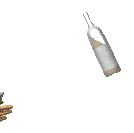AlaskanJack
Elite Cabin-Fever Captain
- Joined
- March 24, 2002
- Messages
- 4,531
- Reaction score
- 2
- City, State
- Centralia, Washington
- Year, Model & Trim Level
- 91 , 93 & 01 Sports
I am replacing my master cylinder today on my 91 Sport. After removing the master cylinder I started thinking hmmm....I didn't have to plug anything off. Very little brake fluid came out during the removal and the two brakelines didn't need plugging. Shouldn't this system be pressurized? Could the (Damn forget the name) you know the valve going to rear brakes, be bad?
I will check my manual and search some posts, just in case my master cylinder does not need replacing. I will wait to bench bleed the master cylinder just in case.
I will check my manual and search some posts, just in case my master cylinder does not need replacing. I will wait to bench bleed the master cylinder just in case.











